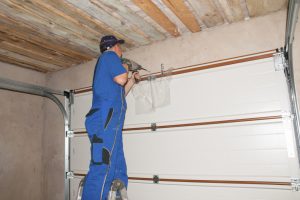- Assess the risk associated with each lift by considering ground conditions, obstructions, and potential hazards.
- Choose appropriate equipment, such as cranes, chains, and slings, to ensure safety and efficiency.
- Calculate weight accurately to avoid accidents and maximize lift capacity when doing lifting procedures.
- Utilize proper rigging techniques such as verifying all components are in good condition, balancing the load, and pre-inspecting hardware.
Ensuring efficient lifting operations is essential for safety and productivity in the construction industry. To ensure that all lifting activities are carried out efficiently, it is necessary to understand the various principles and techniques involved in safe lifting. By following these steps, you can ensure that your lifting operations are carried out safely and effectively.
Implement proper lifting procedures.
Proper lifting procedures are vital to ensuring that lifting operations are safe and efficient. Here are some of the things you should know when doing so:
Plan the lifting operation.
Assessing the risk associated with each lift involves looking at the material being handled, the personnel involved, and the environment of the job site. When assessing risk, it is essential to consider ground conditions, any obstructions that may interfere with the lift’s path, and other potential hazards like overhead cables or proximity of personnel or machines.
Additionally, determining ground levels for supporting equipment such as cranes becomes very beneficial to make sure materials are not lifted too high. This extra step during pre-lift planning also reduces stress on employees while executing the lift.
Choose appropriate equipment.

The construction industry must take extra precautions to ensure safe and efficient site lifting. To do this, the first step is to assess the suitability of the equipment. Choosing appropriate equipment for the lifting operation is essential to avoid accidents and promote efficiency. Quality crane systems are commonly used in construction, but at least two additional pieces of equipment must be inspected before being deployed for operations.
Apart from cranes, other specialized tools, such as chains and slings, must be evaluated for wear and tear before being utilized, as they may not be suitable for certain lifts or jobs. Furthermore, data from all relevant sources must be collected and analyzed to determine which type of load would typically be generated in each task to identify any areas of improvement or other possible risks associated with specific equipment choices.
Calculate weight.
Calculating the weight of items to be lifted accurately is essential to efficient lifting in construction sites. This involves taking into account the actual weight of each item and any additional weight that could be associated with it, such as support equipment or other external materials. If an inaccurate weight estimate is given, it can lead to serious safety risks on the construction site and hinder progress.
Estimating the weight of items precisely ensures that proper precautions are taken while moving them safely without having to worry about potential accidents related to their transportation. Furthermore, getting accurate weights makes it easier for onsite teams to properly plan crane and lift capacities needed for their specific job, with almost no margin for errors or unexpected changes in execution.
Use proper rigging techniques.
Proper rigging techniques involve selecting and using the correct type of rigging equipment for the job based on the characteristics it will be used for – its size, shape, weight, and design.
The fundamental principles for safe rigging include:
- Verifying that all components are in good condition before use
- Using appropriate slings and attachments, making sure the load is balanced
- Ensuring the crane operator has a clear view of both the lift site and the signal person at all times
- Staying within the lifting capacity of both the equipment and personnel
- Pre-inspecting all hardware before each use
- Notifying ground personnel directly below or near the load
Utilize mechanical devices
Utilizing mechanical devices such as hydraulic jacks or cranes is a crucial aspect of the construction industry. This involves using the proper tools to help efficiently lift heavy loads, exceptionally when manual labor might be too strenuous. Such tools prevent manual laborers from experiencing excessive exhaustion while still accomplishing the job.
It also lessens any potential of injury that could take place from trying to lift something that may be too heavy for them to handle manually. Additionally, with these mechanical devices, workers can get more done in less time and with precise accuracy; this is especially true for hard-to-reach areas on higher levels of construction sites where there aren’t many human hands available.
Ensure proper personnel training.

All lift personnel must be trained and follow safety protocols to ensure efficient lifting on construction sites. These measures are essential to ensuring success in the construction process, ensuring that the entire operation runs safely and smoothly.
This includes having a qualified crane operator and riggers who must be both personally capable of operating a crane and adhere to applicable load limits, rigging requirements, and site safety standards. Additionally, all staff working near a crane should receive instruction and training on what to do if something goes wrong so they can act responsibly under pressure.
These are just some fundamental principles and techniques that should be followed to ensure a safe and efficient lifting operation in the construction industry. Adhering to these steps will ensure a successful project completion while complying with safety regulations.













